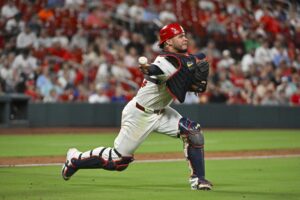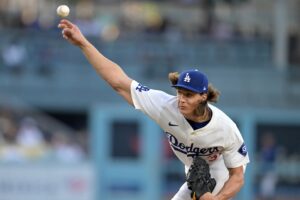Earl Weaver’s 1970 Baltimore Orioles Squad
Continuing onto the next part of our “Reliving History” series, today’s focus will be based around the 1970 Baltimore Orioles. The Orioles had a very good run from 1969 until about 1983, finishing in first or second all but two seasons. At the time, Baltimore was one of the more feared teams in all of baseball.
During the 1970 season, the Orioles finished the year with a 108-54 record under the guidance of manager Earl Weaver. The regular season success for the Orioles translated to a 7-1 record come the postseason. In addition, the Orioles went on to win the World Series that year. As a team, Baltimore had a total Run Differential of +218 with a cumulative team batting line of .257/.344/.401.
Besides the offense, the 1970 Baltimore Orioles had phenomenal pitching as well. As a staff, the Orioles posted a 3.15 ERA over the course of the regular season. That translated to an ERA+ of 116. Furthermore, the Orioles pitching staff that year posted a cumulative strikeout percentage of 15.4% along with the fourth lowest Opponent Batting Average Against in baseball at the time: .235.
With all of that being said, here are a few of the various qualities that stood out about the 1970 Baltimore Orioles.
Twenty Times Three in the Starting Rotation
As anyone who watches baseball knows, pitching and defense are critical components of the game. In many ways, both of those things lead to success for teams. When it came to pitching, the Orioles excelled during the 1970 season. In fact, the starting rotation was so impressive that it featured three twenty-game winners.
Of that trio, right-hander Jim Palmer was especially dominant. During the 1970 season, Palmer threw a total of 305 innings with a 2.71 ERA. While Palmer didn’t impress from a strikeout perspective (5.87 K/9 rate), he did shine when it came to limiting damage in the most critical situations. Furthermore, Palmer made a total of 39 starts that season as the number three starter in Baltimore’s rotation.
In comparison, a 39-game starting pitcher is unheard of in the game anymore. For comparison, right-handed pitcher Justin Verlander recorded 321 starts over the last decade (2010-2019). Over that span, the most starts Verlander made was 34. It just goes to illustrate Palmer’s ability to handle a high workload during the 1970 season.
The other two twenty-game winners in the 1970 Baltimore Orioles starting rotation were left-handers Dave McNally and Mike Cuellar. McNally finished the year with a strikeout percentage of 15.2% and held opponents to a .244 batting average. Meanwhile, Cuellar had a 3.55 Fielding Independent Pitching rating (FIP) and a .260 Batting Average on Balls In Play (BABIP). Both McNally and Cuellar started 40 games during the regular season. Cuellar finished fourth in American League Cy Young Award voting that year.
All about the Robinsons
During the 1970 season, the Baltimore Orioles had a potent batting lineup as well. In fact, that season Baltimore tied with the Chicago Cubs for the fourth most home runs (179), ranked third in RBI (748), and had the fourth highest Weighted On-Base Average (wOBA) in all of baseball at .335. Overall, it was a very good lineup and one where every position player knew their role in the bigger picture.
However, there were two players that particularly stood out, and those were the Robinsons. Right fielder Frank Robinson finished the season with 25 home runs, 78 RBI, and a .918 OPS over 553 plate appearances. All of those things led to Frank Robinson being named an All-Star and finishing tenth in American League Most Valuable Player Award voting.
The other Robinson was third baseman Brooks Robinson. During the 1970 season, Brooks Robinson displayed outstanding defense at the hot corner each and every game. He was one of three Gold Glove winners from the Orioles during the 1970 season. The other two were second baseman Davey Johnson and center fielder Paul Blair. A fourth player — shortstop Mark Belanger — was also an outstanding defender, having won Gold Gloves in 1969, 1971, and then 1973-78.
Over 156 games, Brooks Robinson had a cumulative Fielding Percentage of .966. At the plate, Brooks Robinson also did damage. The future Hall of Famer concluded the 1970 season with a .276/.335/.429 slash line over 673 plate appearances and capped it off with the World Series MVP.
Boog Powell Shows His Presence
Another valuable member of the 1970 Baltimore Orioles starting lineup was the 1970 AL MVP, first baseman Boog Powell. Powell was an All-Star for the third consecutive season. Over the span of 642 plate appearances, Powell slugged .297/.412/.549 with 35 home runs, 114 RBI, and a wOBA of .415. That was the second highest wOBA value of Powell’s 17-year big league career.
Powell shone even more brightly during the first part of the 1970 season. During the first half, he hit .320/.420/.605 over 374 plate appearances in 84 games. In that span, Powell hit 23 home runs, recorded 73 RBI and 59 walks, and had a .313 BABIP. That BABIP showed how much damage Powell could do with the bat in the right situation.
Catching and Run Prevention
Besides having an impactful starting rotation, run prevention came in the form of catching for the 1970 Baltimore Orioles as well. Both Elrod Hendricks and Andy Etchebarren made up the fabulous catching duo for Baltimore. If there was one duo at the time that could prevent the running game on the base paths, it was Hendricks and Etchebarren.
During the 1970 season, Hendricks caught a total of 759 and 2/3 innings. In that span, Hendricks recorded a .986 Fielding Percentage and a Caught Stealing Percentage (CS%) of 48%. That was way above the league average of 39%. In the 1970 World Series, it was 66% (2 of 3).
Etchebarren made a total of 65 starts. In that span, Etchebarren recorded a .984 Fielding Percentage and a CS% of 32%. However, that was out of character — in 1969 his CS% was 59% and in 71 and 72 it was 55%.
Run prevention, especially behind home plate, is extremely important. It becomes even more important when the postseason rolls around and teams are trying to score runs. Both Hendricks and Etchebarren prevented those runs on the basepaths as much as possible during the regular and postseasons.
Richert for the Win
When discussing and looking back at the 1970 Baltimore Orioles, the conversation would not be complete without something on left-handed reliever Pete Richert. The southpaw easily had the best season of his 13-year big league career in 1970 with Baltimore.
Over the span of 50 games, which included 25 closer appearances, Richert posted a 1.98 ERA. That translated to an ERA+ of 186, a FIP of 2.79, and a 10.79 K/9 rate. From a Wins Above Replacement (WAR) perspective, it translated to a value of 2.3.
Richert was a very valuable reliever for Baltimore in every regard. However, Richert was nearly brilliant against right-handed hitters holding them to a .183/.292/.321 slash line. In that span, Richert recorded 41 strikeouts against righties and was part of a three-headed monster for the Orioles.
The other two components of that three-headed monster for the Orioles were right-handers Eddie Watt and Dick Hall. Considering that the Baltimore Orioles had 60 complete games that season, Richert, Watt, and Hall weren’t used in the same way as relievers are today. Often times, Earl Weaver would bring them in when a starting pitcher couldn’t complete their outing. What a luxury that would be for some teams to have in today’s game!
Steamrolling Through October
Once the calendar rolled around to October, a hungry Baltimore Orioles team got even hungrier. After falling to the New York Mets in the 1969 World Series, Baltimore wanted to prove that they had what it takes to dominate the postseason in 1970.
As a result, the Baltimore Orioles made their presence known in the American League Championship Series against the Minnesota Twins. Baltimore swept Minnesota in that series and advanced to the World Series to face the Cincinnati Reds. In total, during October of 1970, Baltimore had a 7-1 record and came out on top as World Series winners.
The standout moment from the 1970 postseason occurred when the aforementioned Mike Cuellar threw a complete game in Game Five of the World Series against Cincinnati. Game Five was the clinching game, and Cuellar delivered. It didn’t come easy, though, as Cuellar surrendered six hits, a walk, and three earned runs while recording four strikeouts. They also had to come back from a 3-0 first inning deficit to win the game.
The Oriole Way Shines Through
Looking back over the span of baseball history, the 1970 Baltimore Orioles were a phenomenal team with dominant starting pitching and a lineup that came through in the right moments. As Baltimore illustrated, being able to have a starting rotation capable of tossing a complete game every time they took the mound was advantageous for any team. Furthermore, the Orioles were able to combine their terrific offense with fabulous defense to help lead the team to the promise land. The Orioles made another World Series appearance the following season against the Pittsburgh Pirates but wound up losing in seven games.
Main Photo
Embed from Getty Images






